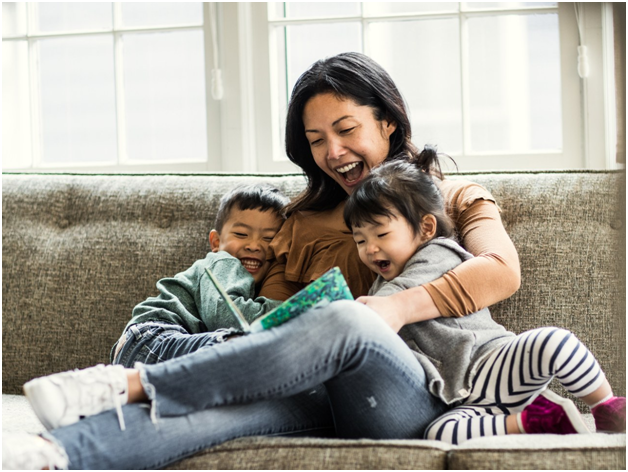BookList
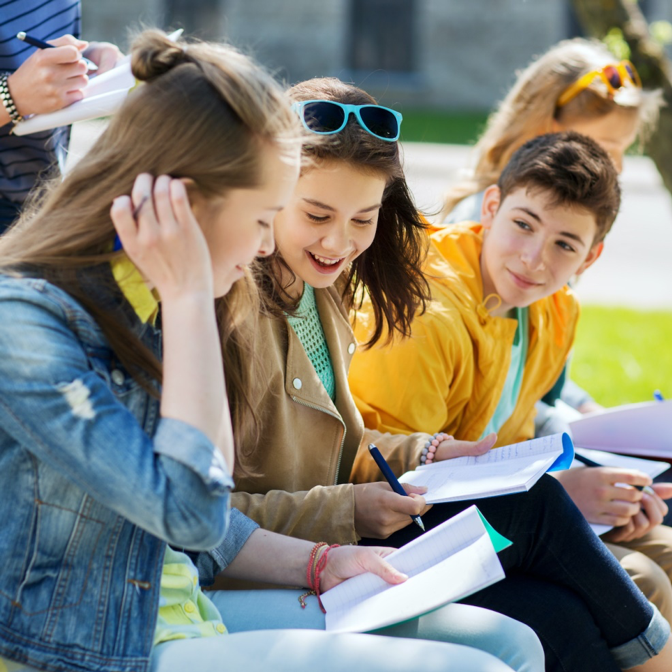
Tanesia R. Hale-Jones is a Montessorian, educator, social activist, poet, artist, and parent, who believes deeply in the importance of community engagement and teaching young people to be global citizens. Tanesia serves as Jr. High Level Director and Adolescent Guide at Escuela del Sol Montessori, where she guides 7th and 8th-grade students and oversees a team of teachers and community partners. Tanesia lives and works on Tiwa Territory in Albuquerque, New Mexico, with her 18-year-old, two cats, and many house plants. She recently shared some of her insights from her many years of working with adolescents. As a Montessori adolescent guide (and a parent of an adolescent), how do you see the role of adults needing to shift for teens? What is your advice for caregivers of adolescents? It’s important to remember that our children aren’t living their parents’ adolescence. I talk to so many adults who had a traumatic or really emotional adolescence. Think back to being an adolescent and that moment of recognizing being connected to something bigger than ourselves. This is both really inviting and also pretty terrifying because it means leaving something behind. Adolescence is marked with a kind of grief of separating from family and yet wanting to separate. It isn’t as dramatic as people or movies sometimes make it out to be, but there is a separation that happens and a yearning for something bigger. I always reminded parents that this experience is really normal and healthy. Our job is to hold space for it to happen. Also, watching someone going through their adolescence brings up a lot for parents, including our own feelings or insecurities. So the invitation is to do your own work. There is a healing process to go through–either by yourself or with partners, friends, or whomever you have in your adult community–that can allow you to be really present for the young people in your life. There is also value in meeting it all with humor. That doesn’t mean laughing at our adolescents, but rather being able to recognize that you don’t have to get on the roller coaster with them. You can respond, acknowledge, and listen well. This means asking curiosity questions and pulling away from the need to fix it for them, which is hard because we don’t want them to be in pain. We love them so much. We long for them to be safe and whole. Yet we need to hold a space for curiosity. My own adolescent is leaving their adolescence at the age of 18. They have been a beautiful reminder that can I be in the presence of someone else’s growth and that I don’t have to do anything about it. I can witness it and support it. Supporting that growth is the gift I can give. How can we, as caregivers, support our adolescents while also giving them the space they need? Do we hold space or give space? I think it is both. So many parents talk about how their adolescents just want to be in their rooms. Parents of one of my students told me how they were going to be away and realized their adolescent was old enough to be home alone. The parents checked in and found out their child was so excited about having the day to themselves. Their adolescent had a day of feeling respected and trusted. They had that space. We can also hold space because when our adolescents do emerge, they often want cuddles and tenderness. Often we can be surprised by that need. But we can just be really present with and accept what they need right now. It might be something very different in the next moment! So just hold it now. It is precious. These moments are like building blocks for the emergence of their adult self. With this awareness of how teens are building their adult selves, what is your take on how important electronics and social media are for our adolescents? How do we stay aware and sensitive to teens’ need to connect through social media platforms while also being aware of the challenges of social media channels? A lot of younger adolescents have grown up in this [high-tech] world and there is a learning curve for adults and parents. I think about how to stay interested in what adolescents are interested in. What are they listening to? What are they watching? In some ways, it’s about getting ahead of it all. For example, so many songs are sampled, so I often go back and ask if they know who wrote the original song. With social media, it’s so tricky. I talk with parents about this all the time. I think a lot of it is about really being honest about who social media was designed for and the repercussions of it for adults and young people. We can help our adolescents examine the content they look at and help them build a critical lens. Building critical awareness and visual acuity about who is being represented leads to great conversations about equity, race, and gender roles and appeals to an adolescent's desire for justice and personal dignity. We can engage in conversations about what they are getting out of the content and what it says to other people. This process isn’t about changing their minds. That’s not really the point. The point is that we are teaching our adolescents to be critical thinkers about what they are consuming and why they are consuming it. We can ask, how does it make you feel? We can explore other moments when they felt that way and how to amplify those moments as well. Do you feel connected? Great! Are there other experiences or activities that make you feel just as connected? It is about teaching discernment, critical analysis on multiple levels, and visual acuity. In some ways, it is also about rooting back to the values you hold as a family and maybe even helping your adolescent to develop their own personal values. This can be hard, especially if our adolescent’s values start to become different from our family’s values. How do you approach these kinds of difficult conversations with adolescents in a way that is respectful of adolescents’ emerging adulthood? It goes back to what I said earlier: you have to do your own work. Difficult conversations can be tricky even when we are communicating adult to adult. When confronted with difficulty or tension, what do we do? I have been practicing stepping toward the conflict or conversation, not with an “I’m going to win” approach, but rather with curiosity. I can explore what is going on for me in that difficult moment. When I am shutting down, how can I turn toward that experience with curiosity? What is getting activated in me when my adolescent says something triggering? We can respond by asking questions: What does this mean to you? What do you mean by that? For example, there are many young folks who are pushing the rigid boundaries of gender and trying on new pronouns. This is both identity formation and also discarding, putting on, and taking off. We can just ask questions and then not get too precious about the answers. If we can tell they are trying something on, we can explore how to be less attached to their process of experimentation. For me, it is always about coming from a place of curiosity and entering from a place of wonder. This is different than getting stuck in a place of thinking that what our adolescent does or says means I have failed as a parent. We want what is best for our children and want them to be successful. Sometimes that means looking at what we think success is. What does the world need from our adolescents? What is the world asking of them? These two things can be really different. So that means looking at the reality that young people are met with and then being willing to be open. I have students who range from having no phones to having TikTok accounts and starting YouTube channels so they can be YouTube stars. As their teacher, I can feel myself getting precious about it and wanting them to be something like an inventor of healing technology! But really, social media can be fun and silly. So I ask questions about it. Which ones do you like? What do you like about them? Oh, that little sample of a song came from a whole song. We could listen to the whole song together! My kid loves memes, which can be so snarky. But there is something really cool about memes and the way they have distilled culture and humor. I think about how there is something clever here. I see the process as my kid understanding their own humor better and being able to critique society in a way that is pithy and ridiculous. Both as a parent and a teacher, I’ve tried to step into adolescents’ world. I often say, “I love that for you.” I don’t have to like it, but I can start to get why they like it. Sometimes adolescence hits and it takes everybody by surprise. With that in mind, do you have any recommendations for entry points or resources for families and caregivers? There is so much written about adolescent brain development, which has been helpful. The work of Sarah-Jayne Blakemore is really powerful. She has a great TED talk and short articles, as well as her book, Inventing Ourselves: The Secret Life of the Teenage Brain . Britt Hawthorne’s book, Raising Antiracist Children: A Practical Parenting Guide , is really, really great and she posts nice videos that are short and to the point. I do think there is something valuable to articles that Montessori adolescent practitioners have published through the years. They are really powerful tools. I will often choose one or two to send to my families during the school year. It’s about rooting back to who these young people really are. This helps me to remember where they are and what they need. Then I can reflect more accurately on who I need to be for them. I think being outside and doing projects is important. Resources for this can range from engaging with local and national parks or restoration projects–things that inspire them to connect with the land– to going to farmers' markets. Adolescents need things that make them feel a little adult and also are opportunities for them to be independent. There is something really great about connecting adolescents to support groups if they need that. For example, where I live we have a transgender resource center that is gender-affirming. There are also resources like GLSEN [Gay, Lesbian and Straight Education Network] and GSA s [Genders & Sexualities Alliances], depending on what kids need. I also think therapy is great for adolescents! Especially when you can find people who are good at working with adolescents. It can be nice to have another person to talk to who isn’t your family. Any other last thoughts? Adolescence brings up a lot for the adults who are offering love and care. But it is a magical time to witness. It’s really fun to watch. There is a tenderness of exploring what the end of something means and how young people are beginning something that they don’t have any clue of how to begin. It is such a liminal space. As adults, we are very much in our thinking brains and can’t really imagine hanging out in a liminal space. However, think about being in the presence of something that is yet to be! That is the invitation that Montessori gives. Adolescence is very internal time. Sometimes adolescents externalize their experience, but often it is very internal. We realize that there is so much happening. Accept the invitation of being curious, playful, and joyful with our young people. Enjoy it and remember what a gift it is to be witness to this process.
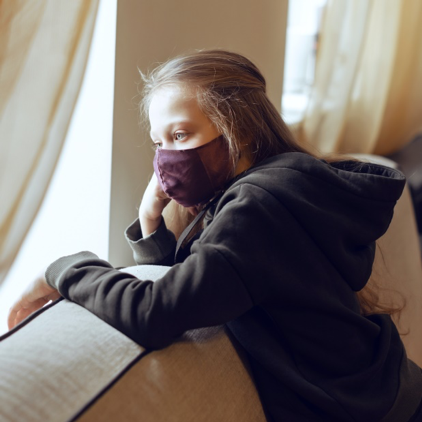
While there has been a certain amount of awareness of how COVID has impacted young children, we thought it would be helpful to shift our attention toward those in their elementary and adolescent years. While the impacts may manifest differently, those in the middle of their school years also experienced considerable disruptions from COVID. From increased anxiety and physicality to challenges in social interactions and work engagement, elementary-aged children and adolescents are facing their own share of struggles. Social Development Those who experienced the start of the pandemic during their elementary and early adolescent years were at home during a time when developmentally they needed to connect with peers and figure out their social identity. It’s during this time that our kids develop their own sense of individuality within the context of community. This interplay amongst peers allows older children to both develop their ability to communicate with others while processing how their individual actions impact those around them. The result? Our young people begin to learn how to practice empathy for others while also advocating for themselves. During the locks-downs and distancing from COVID, many children missed out on key formative experiences, like how to join a group, how to invite others into a group, and even how to have positive conversations. Without some of these skills, navigating social situations, especially those that involve more than one other person, can be trickier. Even children’s awareness of others’ physical space has been impacted, perhaps due to maintaining six feet of distance or even having more time in close proximity to screens. As children have been able to be together again, the boundary line of what is too close or what is too physical is something they are having to discover. Direct instruction and guided practice can help. Elementary-age children love to role-play, so even acting out different scenarios can be beneficial. To foster developing friendships and healthy peer interactions, have conversations with your children and teens about the qualities of a good friend and how to be a good friend to others. Regulating Emotions & Managing Anxiety During the elementary time period, our children are developing their emotional skills, which provide an important base before young people enter their more tumultuous adolescent years. Major emotional skills mastered during this stage include how to adjust to different rules and social norms for behavior, understand others’ feelings, acquire more control and management of emotions, and develop strategies for patience and general adaptability. In addition to not having as much opportunity to flex these social-emotional muscles, so much was outside of our children’s control during the early COVID years. As a result, more young people have developed increased anxiety, which can manifest in a multitude of ways. For some children, just the transition into the school building and away from parents or caregivers can cause anxiety to flare up. For others, trying to figure out how to interact with peers in-person can be anxiety-provoking. To help, we can focus on communication and collaboration. This can range from recognizing and discussing emotions when children are calm, to remaining open and empathetic when strong emotions surface. It’s essential that, as adults, we model emotional regulation so our young people can see how we use coping strategies, like taking deep breaths or stepping away from a situation, rather than just reacting. We can also be sure to address our kids’ behavior rather than their emotions. This helps young people understand the distinction between their feelings and their actions. For example, if someone feels angry, that is just a feeling, which is neither good nor bad. However, if someone acts on that feeling by hitting another person, the behavior of hitting is unacceptable. When we handle disciplinary situations, our responses can help our kids begin to internalize that it is okay to experience a range of emotions and that they have choices and limits in terms of how they behave. Involving our children in the conversation is essential. They might need help voicing or expressing their emotions and anxieties so worries don’t stay hidden inside where they can easily proliferate. Most importantly, we need to help ensure that children don’t keep avoiding whatever is causing them stress or anxiety. Getting Back Into the Rhythm Healthy routines are important for older children and teens, who need structure and predictability to offset the stress associated with the changes they begin to experience in their social lives, their bodies, and even their emotional experiences. With all the disruptions of the pandemic, we need to be especially sensitive to the importance of following through and following up. Our children need us, as adults, to hold consistent, firm, and kind boundaries, so that they can feel secure and settled. From regular sleep and predictable mornings to completing chores and finishing assignments, routines can be the guide. With older children and teens, we also need to engage in respectful, curious conversations about what causes them to feel stressed, tired, or overwhelmed. Ideally, we are encouraging our young people to take an active role in planning routines that will help them manage themselves better. If we brainstorm with our kids and write down the plan together, we can more easily revisit what is going well and what might need to be modified. Also be sure to celebrate the wins and compassionately communicate if something isn’t working well. Above all, our young people need our patience and understanding. This requires us, as adults, to practice our own mindfulness and grounding so we can be present and supportive. If concerns arise, we can work in harmony to compassionately identify possible problems and strategize practical solutions. To see how we support students' emotional regulation, social development, and intellectual engagement, come visit our school. We love to share what we do!
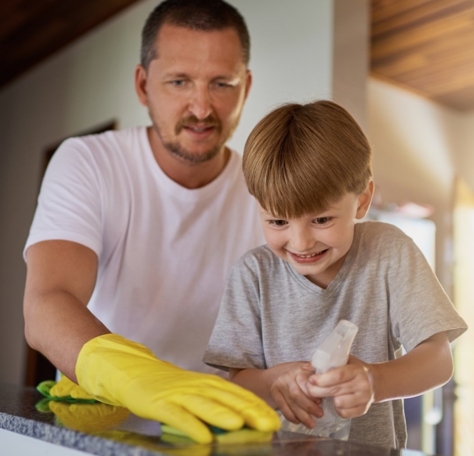
Do you see your child throwing their clothes on the floor in a heap? Maybe leaving things out on the kitchen table? Interrupting during mealtime? It’s so tempting in these moments to jump in, perhaps correcting or reminding (often for what seems like the umpteenth time). One of the keys to a Montessori approach is taking the time to observe what is happening, noting what you see, and waiting for an opportune time to teach what to do rather than what not to do. Supporting Undeveloped Skills For example, a Montessori teacher saw that a child new to the classroom was regularly cutting to the front of the line as children prepared to wash their hands. Other children were getting quite upset with this young friend’s tactics to get to the front of the line. Instead of reprimanding the child, the Montessori teacher observed that he wasn’t acting maliciously. He just seemed to not yet have or know the skills to line up successfully. At a quiet moment, the teacher connected with the young boy and let him know that when there is a line, we just go to the end of where the line is forming. Grateful for this information on social graces, the child then happily started going to the end of the lines. It turns out the child just didn’t know the expectations! It can be so tempting to jump in when we see something happening that we don’t like. Yet as long as children aren’t hurting others, their surroundings, or themself, we practice observing and determining what children still need to learn to be successful. Observation is Key The heart of the Montessori method is learning how to observe children in an objective and meaningful way. Adults learn how to look rather than merely see. In order to look without judgment, expectation, or preference, adults work on developing a deep inner awareness. This requires that we observe to understand rather than see something and jump to conclusions. Thus Montessori education is focused on the natural emergence of young humans at their own pace. The role of adults is to prepare the environment and support children in their optimal development. In order to do this, we have to become constructive observers. We focus on waiting and observing, rather than intervening right away. How This Can Work at Home This is something that we can try at home, too. Perhaps your child is throwing their clothes on the floor in a heap. Rather than scold or lecture in the moment, try taking a deep breath and making yourself a little note to remember to circle back to the undeveloped skill. Later, when everyone is relaxed and content, take the time to connect with your child. Let them know you want to show them how to either put their clothes in the laundry basket or fold and store them for later use. Practice these options together. Finally, thank your child for taking the time with you to learn this skill. Or perhaps you can go over the steps to loading dishes in the dishwasher. Or how to wait for a pause in the conversation. The trick is to observe for the need and wait to give instructions. Children want to do well. Often they just need us to observe, pause, and later take the time to show them how to be successful. This doesn’t mean that our children will always remember how to do what we’ve shown. Sometimes they’ll need a smile and a gentle reminder. Sometimes they’ll need us to cycle back and demonstrate something again. The key is remembering to observe, rather than reacting in the moment. The Montessori Approach Through observation, Dr. Maria Montessori discovered how children’s character is formed through experiences in the environment, how children adapt to their culture, and how children have sensitive periods for acquiring all sorts of important skills. Observation allows us to provide children with opportunities to become competent and capable. Come observe this for yourself! Schedule a tour today!
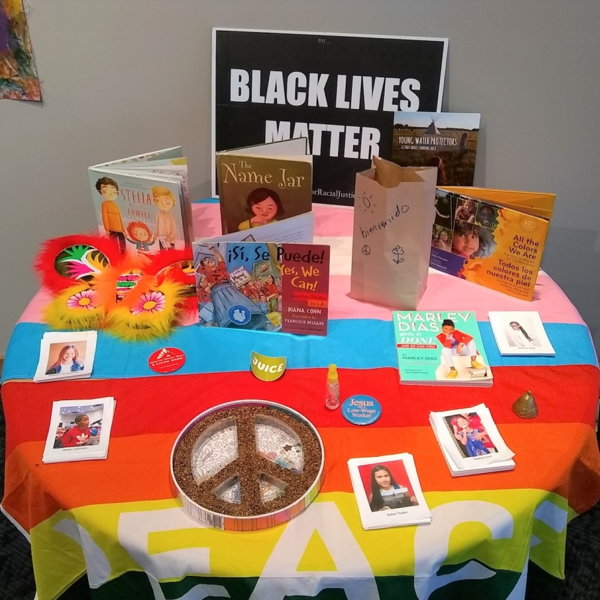
With a social justice and community organizing background, Rebekah Gienapp knew that she wasn't the only parent out there who didn't want to wait until her child was an adult to talk to him about the things that mattered most. As a result, Rebekah started a business focused on nurturing brave kids who seek justice and also wrote a book Raising Antiracist Kids: An Age-By-Age Guide for Parents of White Children . Her youngest son went to a Montessori school and she recently shared some insights about how she has made anti-racist parenting a priority. Conversations with our children about difficult subjects like race and racism can sometimes feel insurmountable. How do you recommend tackling topics that might feel weighty to us as adults but that are important to have with children? The important thing is to begin with more straightforward subjects, especially with our youngest children. We can name skin tone and help kids correlate those skin tone words with the words our society uses for race. This can be really confusing for children. I call myself white but I’m not white like a piece of copier paper. You may have a friend who calls themself black, but their skin is some shade of brown. Talking about things like where our skin color comes from–that it comes from melanin–and where our ancestors are from. That’s where children’s natural curiosity starts. And I think this is more accessible for adults. We aren’t yet talking about the more complicated levels of social injustice and racism. So I would say start with the simpler, less charged topics. Another thing I always encourage, especially for white families, is to make sure you have lots of positive representations of people of color in your child’s books, the media they watch, the toys they play with, and hopefully in your social circle. Do this before you get into talking about prejudice. Around the time my son was about four or five, I started looking more closely at our children’s books. I realized that almost every book we had with a black character was about social injustice and I was sending him a message that being black is mostly about experiencing oppression. So make sure you are laying the groundwork by providing stories and experiences about children playing and doing normal kid stuff. Once you lay that foundation, the next step is talking about prejudice that children might be observing in their everyday world, like personal prejudice between children or that they see in adults. For example, microaggressions are things that kids commit without realizing it. One example I saw is when a new Asian co-teacher came into a preschool room, one of the kids said, “Oh, your English is so good.” The teacher had a method in place: her students knew that if she said “ouch” they would come back to that moment because something hurtful had been said. When it was circle time, they could address the “ouch” and talk more about why a comment was hurtful. So that is the next level, those interpersonal relationships. Then I would bring in some examples of systemic racism that kids can wrap their heads around. With three to six-year-olds, I suggest talking about children’s books. Most Montessori children are in a literacy-rich environment. At your own home, in a library, or a bookstore, take a look at the covers of the books and who the characters are. Likely what you are going to find is that there aren’t many books starring kids of color. This is an example of injustice, but it doesn't have to do with violence and is a little more accessible. Plus, young children are used to thinking about books. With older children, one example is explaining that there are schools that have dress code policies. Sometimes these dress code policies will specify what kind of hair style people can wear, which can be discriminatory against traditional black hair styles. So I would suggest starting with these kinds of topics and laying the foundation before talking about something like police brutality. But obviously, if your child has heard about something, especially something that has happened in your community, you might not be able to do this careful scaffolding. You might need to jump right in and address it. I made a video on Instagram with the example from my city [of Memphis] of Tyre Nichols about how to talk with kids about that event. Take a look for four suggestions when there is something traumatic in the news. How do you see this ongoing anti-racist work being aligned with Montessori principles? The Montessori concept of planes of development is a really helpful tool in figuring out how to say enough, but not too much, for your child to be able to process the information. I also think about the ways that Dr. Montessori wanted children to engage with the real word. That is why even the three-year-olds use glass. Dr. Montessori trusted that if the adults around the children are preparing them in the right way, that they can handle these things. I think this also extends into the realm of values and justice. Obviously we don’t want to overwhelm our children, but we also don’t want to shield them from the world as it is. I also think about the first time I heard about fundamental human needs: people have similar needs but the way they meet them varies according to their time and place and culture. I think one of the roots of racism and oppression is this idea that some ways of meeting needs or expressing culture are better than others. So I think Dr. Montessori’s appreciation for the many different ways people have met their needs through time can be a helpful bridge into anti-bias work. Beyond what we talked about at the beginning, such as engaging in conversation with our children, where do you recommend that parents, caregivers, and educators begin when starting this work? If we already have a strong commitment to anti-racist/anti-bias work and perspectives, we can get into really trying to cram it all into our kids. So just a reminder that we need to be pacing ourselves. We can do a little at a time and remember that there are lots of years. That’s not an excuse not to start! But remember we are starting and we don’t have to get from A to Z in a couple of years. In addition to making sure we have these positive representations and have books and media about social justice issues, it’s also helpful with children to just periodically sprinkle in what you are learning. Sometimes they will be interested and want to talk about it and other times it’s going to go right past them. Sometimes you will think they weren’t listening and then later they will say something that shows they were. This can be a good way to open conversation and, if we do it the right way, it can model for our children that this is a journey and all of us are learning and changing. It’s not about getting it right all the time, or saying I am an expert, or I know what to do. We can model learning and curiosity, and how to change our thinking and behavior when we realize that something was harmful or not true. What do you see as some useful resources for families and educators? For parents who are raising white children, I have a guide called “ What’s Wrong with Saying We Are All Equal .” It’s five conversations to have about race with white children. Parents of all races would probably find my booklists useful. The blog on my website has all kinds of children’s book lists, everything from toddlers through the younger teen years. Britt Hawthorne ’s work is really helpful. She sends out really practical emails. She also has really good Instagram videos with practical nuggets. Tiffany Jewell has two books, which are especially for folks with older elementary kids and teens: The Anti-Racist Kid (which is great for kids around ages 8-12) and This Book is Anti-Racist (which is really good for teens). Both Britt and Tiffany are Montessori-based. Even when they aren’t talking about Montessori, you can see it coming through in their work. The other thing, which is especially useful for parents of color, but also anyone, is Embrace Race . It specifically focuses on children and race. They have lots of recorded webinars and upcoming trainings for parents, as well as tip sheets if you don’t have time to sit through the webinar. Is there anything else you would like to share? I often use the metaphor of the antiracism journey. It is so useful because we are on a path. We are never going to get to the very end and be able to say, “Oh, I’m here. I’m done.” It’s that way for us. It’s that way for our children. I know there are biases that I’ve heard my younger son express that concern me. I’ve had a reaction like I’m doing something wrong if he says those things. Just remember that if you stay consistent and calm and in conversation and are an example to your child, those things will eventually resolve. So don’t panic. Think about how long it can take our children to learn how to use the potty or express their emotions in a way that is healthy. All those things take time. Why would this work be any different?
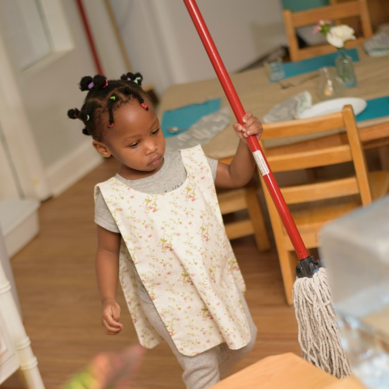
Part of being part of a community is participating in the daily routines to care for our surroundings. In Montessori, we provide numerous ways for children to participate as community members. Children love being able to help care for their environment through real and meaningful activities. In the process of helping maintain and care for their classroom and school, children develop a sense of belonging. They begin to feel at home. Laying the Groundwork In order for children to be successful in this process of caring for their surroundings, adults do a lot of behind-the-scenes preparation. We make sure we have materials ready that are both real and child-sized. Because young children learn from (and love!) repetition, we also want children to be able to continue working with the materials as long as they desire. This might mean having just the right amount of polish for cleaning the mirrors, or vases for arranging fresh cut flowers, or cloths for wiping the tables. Real Outcomes The activities we provide in Montessori environments are real work, rather than something to keep children busy. As such, the outcome of the activities must be clear and necessary. If the plants need water, children can water the plants. If the floor is wet, children can mop the floor. If a table is dirty, children can scrub the table. Because our young people are learning how they can have an impact on their environment, adults work hard to not redo what children just did. Thus, if the table is still dirty, the adults leave it as is. Perhaps later another child can be invited to clean the table, but the adults refrain from swooping in and cleaning the table afterward. Types of Activities In order to determine appropriate care of the environment activities for the classroom, we observe children and also consider what practical maintenance needs to happen each day. If there is an easel with paint, we create a material for washing the easel. If there is an easel with chalk, we offer an activity for washing the chalkboard. The specific kinds of activities depend upon community norms, the greater culture, the climate, and even the length of the day. Regardless of these variables, the activities always have an intelligent purpose and are part of the everyday, regular part of what happens in the community. Individual Satisfaction to Community Impact At first, children will pursue the activities for their own satisfaction. They will clean a table to enjoy the process of creating soapy bubbles and wiping them off the table. Later they will realize how they are caring for the environment in ways that benefit everyone. They will want to scrub a table because they see it is dirty and they want it to be clean. This realization causes children great joy. They love to contribute to the greater good! To help children develop this awareness and sense of belonging, it is nice to acknowledge something a child has done that day to contribute to the community. However, we must tread lightly in this process so that children maintain a sense of doing the activity for themselves and the community, rather than for adult praise. Responsibility Ultimately, care of the environment activities help children learn how to be responsible for their actions. If a plant needs to be watered, and it isn’t watered, eventually the plant will die. We can offer children the opportunity to water the plant, but if no one is willing, there is a tangible and natural consequence. Children learn that their actions matter and they take great pride in being capable contributors. Presentation Before presenting these practical life activities, we work carefully as adults to practice the steps, ensure that the activity makes sense, analyze our movements, and be confident that the presentation flows. Once we create the activity, practice it, and present it, we step back and observe children working with the materials. In the process of observation, we ask questions like: Is this activity working? Do I need to change anything? Do I need to change some of the steps? Do I need to take out unnecessary steps? Does the activity need to be removed? Ultimately though, children will observe what is essential in the activity and make it their own unique process. As children internalize the procedure, they will start to realize how capable they are. They will put their whole focus into the work and experience great satisfaction in the process of engaging with meaningful work in the community. They will develop a strong sense of belonging, and ultimately flourish into their fullest self. Support at Home As parents, we are often curious about how we can support our children’s Montessori experience at home. One of the best ways is to create care of the environment routines and activities at home. Children can clean up their toys at the end of the day, set the table for dinner, or put dirty clothes in the laundry basket. We don’t need elaborate preparation, but rather carefully selected items or furniture: special shelves for toys, a low shelf or drawer prepared with items for setting the table, or a basket in the room for laundry. Taking a little time to think through the steps involved and what children will need to be successful goes a long way. As adults, we move through daily activities without having to think about what we are doing. Young children, though, are learning how to master their movements. Thus, when we are presenting how to do something, our children need us to slow down and really isolate each step of the process. Significance and Belonging For children, learning how to care for their surroundings is a remarkable gift. Through this meaningful work, children develop a strong sense of belonging and significance. They see how their contribution matters. Come visit our school to see how even our youngest children care for their community and develop personal purpose!
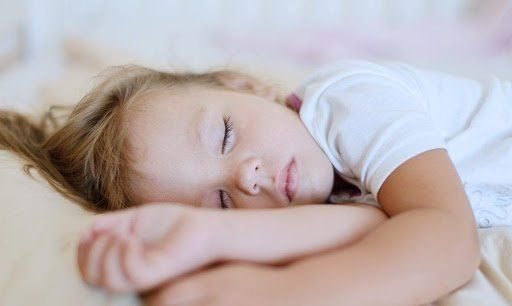
At some point or another, we all struggle with some element of our children’s bedtimes. We know they need a good amount of quality sleep but making that happen is no small task. Figuring out what works for your child is best done early on in their life, so today we are sharing some ideas to implement a successful bedtime structure for your baby or toddler.
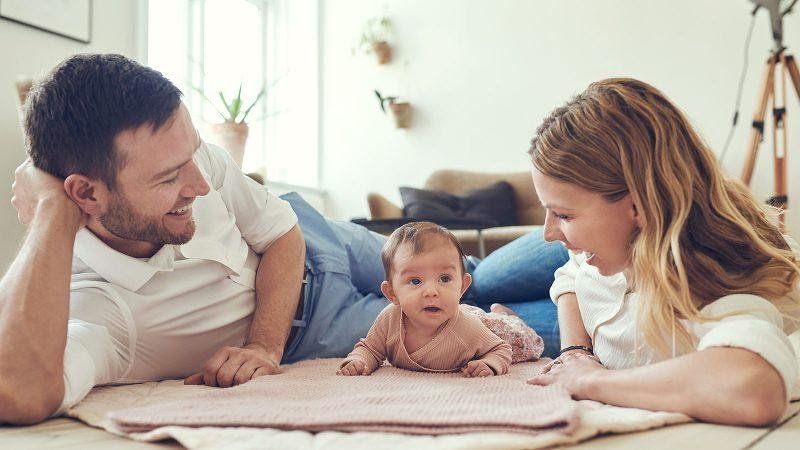
Parenting is an amazing life experience. We all know how lucky we are to watch our children as they grow into the people they are meant to be. We try to stop and appreciate the little moments. We take hundreds of photos. We try to prepare them healthy food and space to run and play. We tell them we love them and do our very best to really be present.
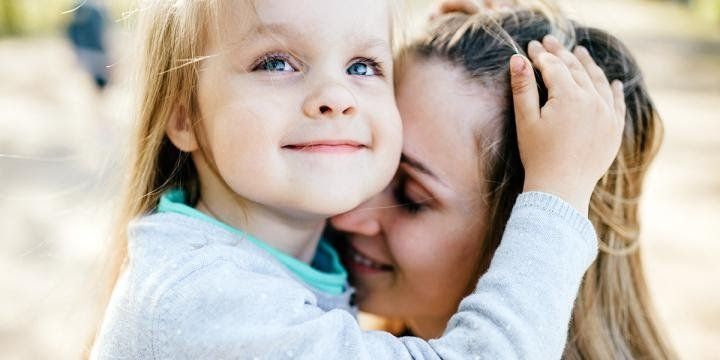
As families we are currently faced with enormous challenges we very likely did not predict or expect. Your children are probably home from school, you are likely working from home, the streets are eerily silent, and grocery stores are weird places. We’re all a little on edge, but as you might imagine, this is a difficult time for our children. You’ve likely seen a host of surprising emotions pour from them in recent weeks. We know you want to be there for your child, and this is a lot to handle at once. In this article we share some ideas to help you support your little ones as we all navigate through these tricky times.
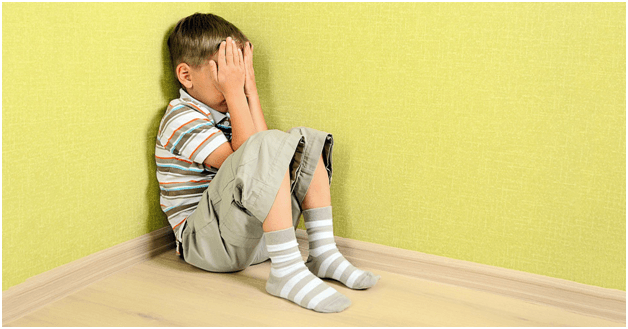
Every child feels fear from time to time. Whether it’s about the monster under the bed or thinking about a scary story a friend told them, it can be tricky as a parent to know how to help our children through those moments. This week, we share our thoughts on fear and what we can do for our kids.
The science behind fear
Fear is one of the most primitive emotions we experience. Historically it served (and continues to serve) a vital function for survival. Fear is essentially what we feel when our brain perceives stimuli as dangerous.

